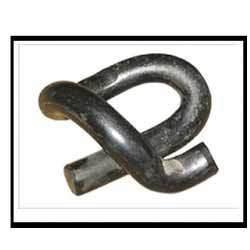-
Posts
41 -
Joined
-
Last visited
Content Type
Profiles
Forums
Articles
Gallery
Downloads
Events
Everything posted by Olorin
-
I see, understandable! Thank you for your help.
-
I didn’t test it outside the forge, something I regretted after putting it in; I had meant to but I got excited to finally be done. I was looking at a variable speed motor on Amazon that might do the trick, what’s the optimal flow rate for a ribbon burner forge of this size would you say? For air and gas flow
-
Latticino it is not fully cured, I was unaware that would cause a problem. I have a section to choke down the air flow a little more and I have a better regulator to attach to the forge, so I’ll try that when I get a chance. Thanks and by not fully cured I mean heat cured just to be clear! If I get a blower with a variable speed to reduce the amount of air going through and reduce the PSI of the propane do you think that would help?
-
Ok, no need to be rude about it I’m still new to making forges. I’ll keep that in mind and start again.
-
I know there are forums on popping forged already, but none of them I’ve seen exactly describe the issue I’m having. My forge is a ribbon burner 2”x4”x14 1/4”, an interior size of about 3”x18”; when using the forge it lights up and runs beautifully, but after a minute or two it pops loudly and the flame goes out. I can’t think of any reasons it would be doing this, there are no cracks in the burner, the pipes are brand new, the refractory is solid. Does anyone have any ideas? I’ll post the video if it will let me. IMG_2207.mov
-
What is the best 'clay' to use when making a hamon? I am using a high temp. furnace cement putty, but it makes a lot of bubbles when it cures and gives my blades an inconsistent pattern. I follow the directions on the tub of clay to apply, but it still does some weird stuff (cooling in random places where the clay comes off making a spotty pattern that doesn't look very good). Anyone know of something better to use? Thanks!
-
Huh, I was kind of on the fence on wether or not rr spikes were high carbon or not, I didn't think so but I had heard otherwise from other people. Also good to know!
-
Thanks for all the tips! My questions have been answered! I'll keep an eye out for W1/2 and the 10x series or low Mn/Cr steel. And I'll be sure to post in a more specific area next time, I didn't realize the term "shallow hardening" wasn't universal with blacksmiths, that's good to know!
-
Any chance anyone has a list of shallow hardening steels? I can't seem to find one online. Are there any others besides the 10X series of metal? Thanks!
-

Re-softening a clay tempered blade
Olorin replied to Olorin's topic in Heat Treating Knives, Blades etc
OK, I got a larger tank so I could quench potentially larger projects such as swords (if and when I get to that and I actually have a larger short sword in progress that will require a larger tank than what I had previously available), I typically have access to a decent amount of oil so it was more financially feasible to just use that than to buy more, I am aware of the dangerous of toxic chemicals and take precautions in the moment to deal with them (though they aren't perfect they work for what I do). And sorry for thanking you for advice, I tend to be polite to people when talking to them online, but I'll make sure not to thank you anymore. I will no longer be monitoring this post, I learned what I needed. Çiao! -

Re-softening a clay tempered blade
Olorin replied to Olorin's topic in Heat Treating Knives, Blades etc
Fair enough. I'll invest in a good respirator. Thanks! -

Re-softening a clay tempered blade
Olorin replied to Olorin's topic in Heat Treating Knives, Blades etc
True, but I am in a well ventilated area (outside) and keep my head back and away from the smoke. I should be fine, and it is easier and cheaper to fill a 100 lb. propane tank with motor oil than Parks 50! Thank you for your concern! -

Re-softening a clay tempered blade
Olorin replied to Olorin's topic in Heat Treating Knives, Blades etc
JHCC, yeah it is rather curvy, but I manage to get it unbent and straight. Thomas powers, what steel would you recommend for doing a Hamon? -

Re-softening a clay tempered blade
Olorin replied to Olorin's topic in Heat Treating Knives, Blades etc
Our school used motor oil for quenching, but it very well may be. And I have heard of many people using motor oil as a quenchant. -

Re-softening a clay tempered blade
Olorin replied to Olorin's topic in Heat Treating Knives, Blades etc
Sounds good! I've got an old 100 lb propane tank that I've cleaned out and a few gallons of old motor oil that I was gonna fill it with for longer stuff. I'll cut the top off it tomorrow and get it set up. Thanks for the tips! -

Re-softening a clay tempered blade
Olorin replied to Olorin's topic in Heat Treating Knives, Blades etc
Bob Brandl, oh I never thought about angle iron, I'll have to try it. I've done a few practice blades and most of them have cracked or broken, but that's more likely than not because I am quenching with water. I am in the process of getting an oil quench tank as well but I'm not quite there yet. Also, the steel is a piece of railroad tie, any good for a water quench? One of these if my description was a little vague. -

Re-softening a clay tempered blade
Olorin replied to Olorin's topic in Heat Treating Knives, Blades etc
Steve thanks that helps a lot! Buzzkill, yeah I was thinking about the three pin method. I'll have to put something together for next time. Thanks! -
I have a knife I have been working on and just did a clay heat treat, but alas the blade warped and I didn't notice before it cooled down too much for me to do anything about it. I then heated it to critical temp. or just below it and left it to cool in the forge. Does anyone have any tips for softening a differentially hardened blade so that it won't crack in the next quench? A simple list of steps on annealing and normalizing to get the best result would be appreciated. PS. I used the search function on the forum but couldn't find anything specific. And I searched on Google but didn't find anything helpful either.
-
I apologize. I didn't mean to start anything, debate was not my intention. I was unaware that taking discarded rail road clips was illegal, but I will keep that in mind for future. Although I have never seen anyone come along the tracks to pick up the discarded materials, I will keep that in mind. I believe I am finished with this thread. Thank you for all your help, I appreciate it. (Also, I have only been on this thread a little while and only come on when I have a question that needs answering and don't go much into other topics as my questions are usually rather specific. I was unaware of any other threads stating that this was illegal and, with all due respect, would appreciate being given the benefit of the doubt, if that is possible. And I have done research, but have heard many different things from many different sources all saying that their way works. I got the boiling water tip from someone on this forum with four circles under their name.)
-
I never would have tried quenching it if I had seen cracks all over it, I checked before applying clay to make sure, but I think it may have been the breaking off of the "clay" and cooling at random points on the blade hardening in random spots that caused the structure to lose strength and crack. I could be wrong though, I'm not a metallurgist. I did also make the mistake of thinking the blade had cooled enough to cool it the rest of the way in water (a mistake I will not make again. I just didn't think it through). Frosty: It is true that it would be easier to buy known knife steel and I will do so for future, but for this knife I had steel already picked out. And now that I think about it, I remember that I didn't use the piece of round bar as was afore stated, instead I used a railroad e-clip for that blade and when I looked at the parent stock yesterday I noticed some pre-existing cracks. Maybe not enough to cause structural problems throughout the whole piece, but they were there. Thank you for the recommendation! Also, I would prefer to use steel that I didn't buy while learning how to make knives. Buying steel would be easier and better, but for now I will use the steel that is readily available to me (my cousins live directly beside the railroad tracks and can quickly find lots of loose railroad spikes and clips.)
-
I think I figured out why it didn't work. The "clay" that I was using during the quench crumbled and broke off almost immediately after touching the water, it wasn't designed to cling to the metal and likely caused hardening and softening in random places where some chunks stayed on and some didn't. (BTW the blade cracked all over the place when I tried to anneal it). I am just a novice bladesmith so I'm still trying to figure everything out. Thanks for all the help!
-
I'm not sure what kind of steel it is. I found it in my basement (we have lots of random materials lying around, no one knows where they come from). It's a piece of hardenable round stock the body of which was about three and a half feet long. Other than that I don't know.
-
Thanks, that helps a lot. I had heard from someone that for modern steel you should use near to boiling water. I guess that was incorrect. But thanks for the tip!
-
Right heat treat, that's what I meant. I see it called a temper line all over the place and I get the two mixed up sometimes. I usually quench into water (This time into nearly boiling water) and I'm using a piece of mid-high carbon steel round-stock. I'm not sure about the exact material.

